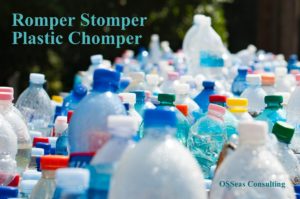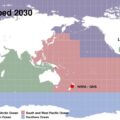
Romper Stomper Plastic Chomper
— June 5, 2020I can’t take credit for the title, “Romper Stomper Plastic Chomper”, that came from Dave Borlace from the YouTube channel “Just Have A Think”. Dave picked up on an article in ‘Science Magazine’ by Japanese researchers titled “A bacterium that degrades and assimilates poly(ethylene terephthalate)”. That form of polyethylene is known as PET and is used extensively in the plastics industry, particularly for packaging. This is one of the main plastics that cause environmental concern and contribute to the eight million or so tons of plastics floating in gyres in our oceans.
The discovery came about after a pile of plastics at a Japanese recycling centre in Kyoto, which had remained untouched for some time, was found to have a sort of sludge all over the surface. This unusual condition was brought to the scientists attention. They found that a bacterium had adapted to produce two enzymes that had the capability to break apart the long string polymer and turn the plastic into a food source. They named the bacteria Ideonella sakaiensis 201-F6, however, Dave thought Romper Stomper Plastic Chomper a far more apt name.
This type of plastic, PET, had only been in production for about fifty years, so this bacteria had adapted to digest this plastic within the last fifty years or so. That could have happened within a few years, but we only found the microorganism now because a pile of bottles had been left untouched and the bacteria could multiply to the extent that they were noticeable.
The two enzymes have been isolated and found to be able to carry out the chomping up of this long polymer outside of the bacteria itself. This then opens the door to commercial operations to reduce these plastics to reusable constituents.
For me, the key takeaway here is the rapidity with which nature herself adapted to the new polymer and changed its own DNA so that a new, modified enzyme with larger jaws was produced which could break this polymer chain (See Dave’s video for a full explanation, link below ). What the bacteria was after was the carbon in the polymer. For that bacteria carbon is not an mortal enemy of the environment. It’s just food!
As anyone in the oil and gas industry knows, bacteria is rife in the products we extract from the ground. Much research has been done on the bacteria that actually modify, break down or destroy crude oil. Numerous articles in many publications like ‘Science Daily’ attest to the activity of microbes in our natural hydrocarbon industry (remember, oil and gas is not dead dinosaurs). These bacteria most likely allowed the very rapid return of the ecosystem after the Gulf War oil disaster. An environmental catastrophe that was supposed to kill all life in the Gulf for hundreds of years. Well, maybe not that long, but certainly much longer than was actually found to have been the case.
Nature herself has a way of not only invoking entropy at every opportunity, but also returning everything to its basic, reusable state. When one is fully appraised of the findings of science in these matters, then we suddenly find that there is no justification for the disaster rhetoric we get from many in the Green movement. Environmental extremism, or climate change alarmists for that matter, are revealed for their true nature, which is political and social anarchists.
It is obvious that Nature will out in the end. What we need to do is support nature in doing what it does best, with policies and practises that are simply good common sense, as good stewards of our home, planet Earth.
Dennis Knox
Editor
Just Have A Think
https://www.youtube.com/watch?v=rtZs-MPFcHo&feature=youtu.be
A bacterium that degrades and assimilates poly(ethylene terephthalate)
Science 11 Mar 2016:
Vol. 351, Issue 6278, pp. 1196-1199
DOI: 10.1126/science.aad6359
https://science.sciencemag.org/content/351/6278/1196






Leave a reply
You must be logged in to post a comment.